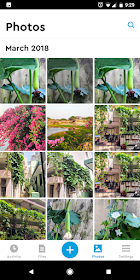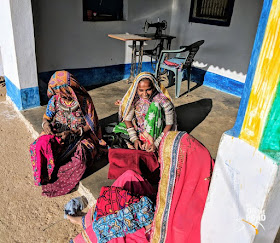
You have to love India for its incredible festivals. We seem to have so many of them, but in spite of these huge numbers we still end up celebrating our festivals with gusto. And the fervour is more in the Indian countryside where we still follow the ancient traditions and cultures and the joy of celebrating the festival is very much intact and untarnished.
One such festival that I got to see at close quarters is the Tamil festival of Pongal, which celebrates the northern movement of the sun (Uttarayan), Makara Sankranthi and welcomes the first harvest of rice in the year. I know that I am about 2 months too late to get this across to you, but nonetheless it is an experience that I wanted to share with all for you to enjoy and experience in future years to come.
The village where I experienced this festival is a traditional Tamil Nadu village called Kallidaikurichi that is tucked by the fertile banks of the Thamarabarani river in the Tirunelveli district. This village located right under the towering Western Ghats, is known for its iconic saaral season, its appalams, its orthodox brahmin culture and rich traditions, its laidback environment and its river and canals.
This village in India’s deep south happens to be my ancestral village and hence offered a comfortable base from where I could experience the largest and the richest festival of Tamil Nadu. The festival of Pongal usually lasts for four days starting with the Bhogi festival and followed by Thai Pongal, Maatu Pongal and Kaanum Pongal. Even though the actual festival is celebrated on these four days, work begins much before, some even a couple of weeks before.
Nearly all households get their entire homes thoroughly cleaned and then they ensure that their home is given a fresh coat of paint. While the modern houses get to choose from the diverse color palette offered by the paint manufacturers, the traditional houses, especially the ones located in the Agraharam, they use limestone (locally known as sunnambu) mixed with indigo as the main coat and then, they use the rust or red color for decorations, akin to the look of the traditional temples of Tamil Nadu.
The markets too are not far away from the festive action. Two to three days before the start of the festival, truck loads of colorful flowers, massive stalks of sugarcane, fresh roots of turmeric, lots of banana stems and many varieties of bananas and other traditional fruits arrive at the local market. Locals throng to the market to buy these festive essentials. The ones who buy early can drive a price bargain and those who buy on the day of the festival end up paying the price quoted by the shopkeeper as they know these items are in heavy demand.
For me, the days preceding to the festival were as vibrant and action packed like the festival itself. Early morning and late evening walks to the local flower, vegetable and fruit market would be an absolute treat to the senses. The biggest crowds would be at the textile shops where people were buying everything from sarees to shirts, dhotis and more. And the best part of the pre-festival preparation is that everyone seems to have a sparkle in their eyes and a spring in their steps. After all, this is the state’s largest festival and for four days, everything literally comes to a standstill and all people do is wear new clothes, eat good food, visit temples and have a good time with family and friends.
The day preceding Thai Pongal or Makara Sankranthi is the day of the Bhogi festival when people wake up at dawn and light up a bonfire with old clothes and belongings. This is believed to get rid of all evil and old and welcome the new. The cattle herders and farmers also paint the horns of their buffalos, cows and oxen on this day. During the day, the entire house is cleaned and decorated with flowers, banana stems and sugarcane stalks. On the night of this Bhogi festival, people keep a lot of fruits, vegetables, sugarcane stalks, banana stems and more in front of their prayer room.
The 2nd day is the main festival day. It is the day of Makara Sankranthi and also of Thai Pongal. As soon as people wake up, they are supposed to look at the fruits, veggies, sugarcane stalks and banana stems so that the rest of the year is bountiful for them. Then, everyone’s head in the household is anointed with sesame oil and they then take a bath and wear new clothes. Then, the action either shifts to the part of the house which gets direct sunlight (in the case of the Brahmins) or to the street in front of the house (in case of the other castes).
Here, the women of the household draw a colorful kollam or Rangoli on the ground and then set up the makeshift stove to cook the Pongal. Once the fire is burning, the women mount a traditional brass or stainless steel vessel on top of the stove, add milk to it and wait for the milk to boil. Once the milk starts overflowing, the women add freshly harvested rice grains to it, they blow a conch, ring a bell and then make a sound called olave while everyone shouts ‘Pongalo Pongal’. They then offer look up at the Sun god, offer him their respects and send a silent prayer hoping for a bountiful harvest all year long.
Once the prayers have been offered to the Sun God, the action shifts indoors and to the dining table where a feast consisting of Vennu Pongal (Salty and Spicy Rice Dish), Sakarai Pongal (Sweet Jaggery based rice dish), vadai, murukku and payasam has been prepared. After the delightful and delicious breakfast, the entire family make their way to the temple to offer their respect to the lord and to seek his blessings. The rest of the day is a combination of family get togethers, more delicious meals, a day trip to nearby scenic getaways and some home entertainment.
The third day of the Pongal festival is for the cattle. Called Maattu Pongal, this day is known for Jallikattu or the bull taming game. Even though a lot of animal welfare groups want this activity to be banned, the Jallikattu still takes place and is extremely popular in Madurai and nearby districts. In spite of the threat of injuries, a lot of brave men try their hand at taming the bull. The winners get cash prizes or household items like a refrigerator, television, gas stove, blender, grinder, etc. While we all hear and see the Jallikattu on the TV, the true festival is for the cattle, where in, they are bathed, decorated with flowers and vermilion and treated to delicious fruits, sugarcane and food. In many places, people also celebrate Kanu Pidi, where the young women and girls feed crows and other birds and pray for the welfare of their brothers.
The fourth or the last day of the Pongal festival is called Kaanum or Kanni Pongal. This is the day of family excursions and get together. The idea is to for all the family to be together, be happy, eat good food and celebrate the festival together. A lot of people are also known to gamble on this day and eat non vegetarian food.
In all the four days of this festival and the days preceding it, there is vibrancy in the atmosphere and there is a lot of sumptuous food on the table. Colorful scenes, happy faces, beautiful kollam (in front of the houses), gorgeously decked ladies and a total party atmosphere is how I would describe the Tamil festival of Pongal. The experience of celebrating this festival in a traditional Tamil Nadu village just makes it a whole lot sweeter, richer and surreal. I hope you get to experience this too in the years to come!








